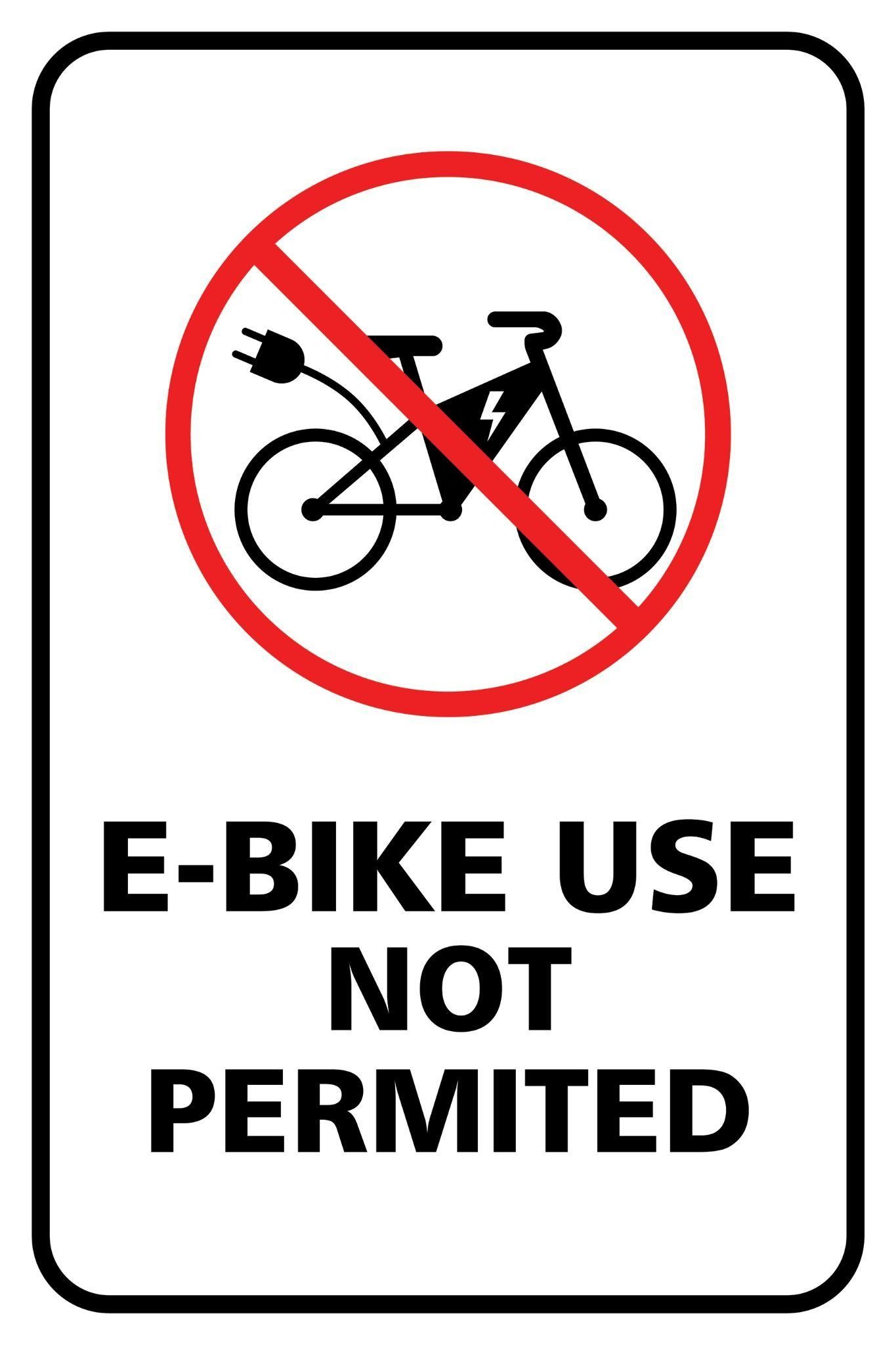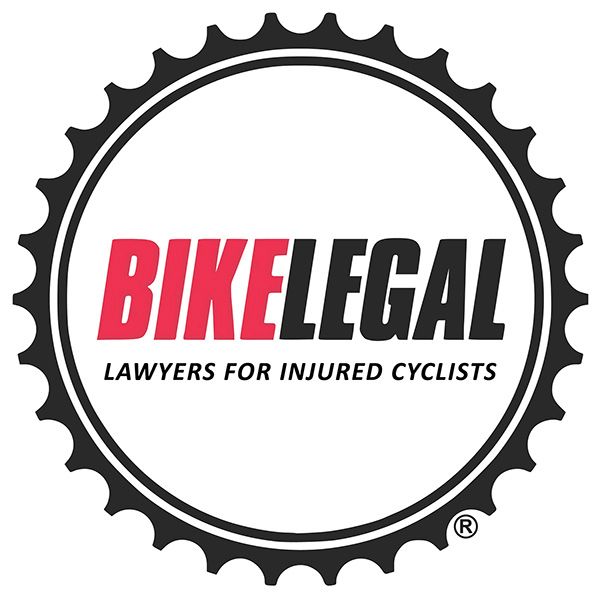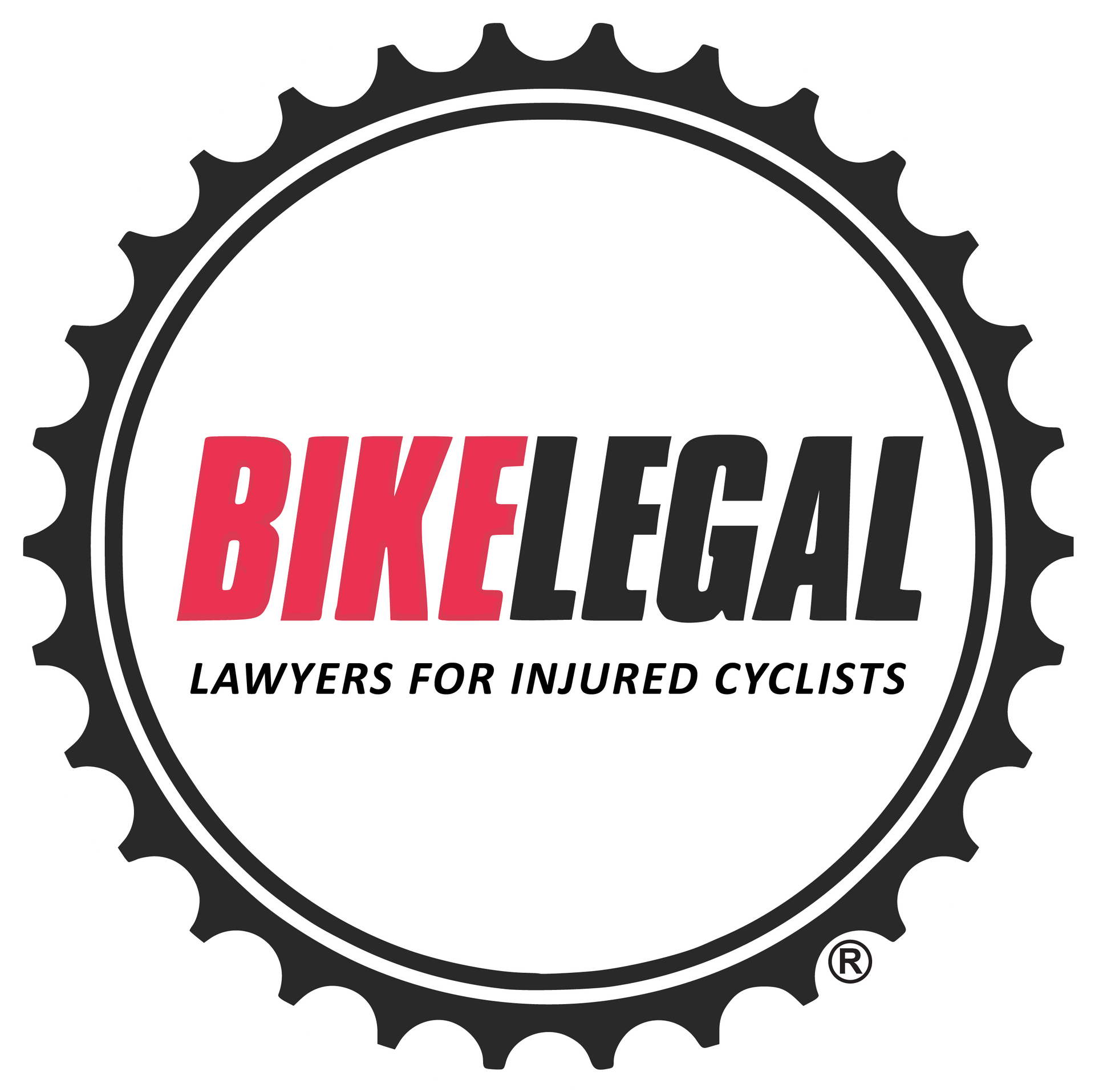Nevada E-Bike Laws 2025: Classifications, Age, Helmet, and Riding Rules
Follow us on
social media!
Electric bicycles (e-bikes) have surged in popularity across the United States, and Nevada is no exception. People are choosing e-bikes as an affordable and sustainable means of commuting and recreation. With this rapid growth, Nevada lawmakers are updating e-bike regulations to improve safety and provide clear guidance for cyclists and drivers.
In this guide, we’ll break down Nevada’s e-bike laws and 2025 legislative updates. You’ll learn how e-bikes are defined and classified under state law, the key differences from mopeds, where you can and cannot ride an e-bike in Nevada, helmet and age requirements, and what to do if you’re involved in an e-bike crash.
Table Of Contents
Nevada Electric Bicycle Definition, Classifications & Requirements
Nevada E-bike Definition and Differences vs. Mopeds / Motorcycles
Under NRS 484B.017 and NRS 482.0287, an electric bicycle is a two- or three-wheeled device that:
- Has fully operable pedals,
- Includes a seat or saddle for the rider,
- Contains an electric motor of not more than 750 watts, and
- Meets the criteria of one of three classifications (Class 1, 2, or 3).
Nevada law specifies that e-bikes are not mopeds or motorcycles. Unlike mopeds or motorcycles, e-bikes:
- Do not require a driver’s license, registration, or insurance,
- They are generally treated as bicycles for purposes of roadway use,
- Must still comply with equipment and labeling requirements.
E-Bike Classifications (SB 383, 2021 → NRS 484B.017)
Nevada adopted the three-class e-bike system through Senate Bill 383 (2021), which brought the state's law into line with national standards. The classes are:
- Class 1: Pedal-assist only; motor stops when the bicycle reaches 20 mph.
- Class 2: Throttle-assisted; motor can propel the bike without pedaling, but stops at 20 mph.
- Class 3: Pedal-assist only; motor stops at 28 mph.
These distinctions matter because some rules (such as minimum age and helmet use) differ by class.
Additional Equipment & Labeling Requirements (NRS 484B.784)
Nevada law requires electric bicycle manufacturers and distributors to:
- Permanently affix a label to every e-bike, showing its class, maximum assisted speed, and motor wattage.
- Ensure e-bikes comply with U.S. Consumer Product Safety Commission standards (16 C.F.R. Part 1512).
- Design e-bikes so that motors disengage when pedaling stops or brakes are applied.
- For Class 3 e-bikes, include a functioning speedometer.
- Prohibit tampering or modification of an e-bike’s motor/speed unless the label is updated to reflect the change.
Age Requirements in Nevada for E-Bike Riders

Nevada law does not set a statewide minimum age for operating most e-bikes. Under the Nevada Revised Statutes, anyone can legally ride a Class 1 or Class 2 electric bicycle, regardless of age.
However, many legal and safety guides treat Class 3 e-bikes differently. Because these bikes can reach higher speeds (up to 28 mph with pedal assist), a common interpretation is that riders must be at least 16 years old to operate them. While this threshold isn’t explicitly stated in the NRS, it reflects best practices and aligns Nevada with national recommendations.
Local Rules Affecting Age
Since state law leaves gaps, some cities and counties have passed their own ordinances. For example:
- Clark County has adopted new e-bike regulations that include restrictions on minors for certain types of e-bike use.
- Boulder City has also passed e-bike ordinances addressing youth riders.
Because local ordinances can vary, families need to check the specific rules in their city or county before allowing minors to ride.
Key Takeaway
- Class 1 & 2: No minimum age in state law.
- Class 3: Commonly treated as 16+.
- Local ordinances may add restrictions on minors, so always check city or county rules.
Helmet Requirements for E-bike Riders in Nevada
Nevada does not have a statewide universal helmet law for bicycle or e-bike riders. That means most adult riders are not legally required to wear a helmet under state law. However, the requirements become more nuanced when looking at e-bike classes and local ordinances.
Statewide Rules
- No general helmet requirement for riders of Class 1 or Class 2 e-bikes.
- Some legal summaries state that helmets are required for riders under 18 on Class 3 e-bikes, but this is not clearly written into Nevada’s statutes. Instead, it reflects how higher-speed e-bikes are treated across the U.S. and aligns with safety best practices.
Local Ordinances
Because the state leaves
bicycle helmet use largely unregulated, cities and counties have stepped in:
- Clark County requires riders under 18 to wear helmets when operating electric bicycles (e-bikes) or scooters.
- Boulder City requires helmets for anyone under 18 riding a bicycle, electric bicycle (e-bike), or scooter.
- Other municipalities may have similar ordinances, so it’s vital to confirm local rules before riding.
Safety Recommendations
Even where not legally required, wearing a helmet is strongly recommended for anyone riding a bicycle, e-bike, or scooter. Bicycle Helmets reduce the risk of serious head injury in crashes, for both adults and youth.
Rules of the Road for E-Bike Riders in Nevada
Nevada law treats electric bicycles much like traditional bicycles when it comes to roadway operation. Riders enjoy the same rights as vehicle drivers, but they are also held to the same responsibilities under state traffic laws.
Rights & Duties (Traffic Laws, Yielding, Right-of-Way)
- NRS 484B.763: Every person riding an e-bike has all the rights and duties of vehicle drivers. This includes obeying traffic signals, yielding to pedestrians, and following right-of-way rules.
- Riders must stop at stop signs and red lights, just like cars — unless future laws change this (see AB 168 discussion below).
Positioning & Passing
- NRS 484B.777: Riders must travel as close to the right-hand side of the roadway as practicable unless:
- Riding at the speed of the surrounding traffic,
- Preparing to make a left turn, or
- Conditions make it unsafe (hazards, narrow lanes, parked cars, etc.).
- Riders may not ride more than two abreast on a roadway unless in a bike lane or on a path designed for bikes.
Signaling & Turning
- NRS 484B.768–769: E-bike riders must signal turns using hand and arm signals, though they are only required to signal once, not continuously.
- A right turn can be signaled by extending the right arm outward.
- Riders are not required to signal if both hands are needed to maintain control.
Equipment and Visibility
- NRS 484B.783: At night, e-bikes must have:
- A white front lamp visible at 500 feet,
- A red rear reflector visible from 50–300 feet, and
- Side reflectors or reflective material visible from 600 feet.
- All e-bikes must have functional brakes that can make the wheels skid on dry pavement.
Other Important Rules
- Riders must remain seated while operating (NRS 484B.770).
- It is illegal to carry more passengers than the bike was designed for.
- Riders may not cling to vehicles while on the roadway (NRS 484B.773).
- Carrying packages is fine, but not if it prevents keeping one hand on the handlebars (NRS 484B.780).
For additional information, refer to our article on Nevada Bicycle Laws.
Where You Can and Cannot Ride E-Bikes in Nevada

Nevada law allows e-bikes in most places where traditional bicycles are permitted, but there are important exceptions depending on the bike’s class, the type of land, and local ordinances.
Trail & Off-Road Access: State Lands, BLM, and U.S. Forest Service
- State Parks: Each Nevada state park sets its own rules and regulations. For example, Lake Tahoe Nevada State Park allows e-bikes on certain trails, such as the Flume Trail and specific portions of the Tahoe Rim Trail. Other parks may limit e-bike use or impose speed restrictions. Always check with the park before riding.
- BLM Lands: E-bikes are allowed on all trails and roads open to OHV (off-highway vehicle) use. Access to non-motorized trails requires written approval from the local BLM Field Office.
- U.S. Forest Service: E-bikes are treated as motorized vehicles, which means they are restricted to trails that already allow motorized use. They are not permitted on trails designated for non-motorized travel only.
Parks
- County Parks: Local ordinances apply. Clark County permits e-bikes in parks but imposes a 15 mph speed limit and requires minors to wear helmets.
- City Parks: Some cities may restrict Class 3 e-bikes or prohibit e-bikes entirely on shared-use trails.
Sidewalks
- Nevada state law does not ban e-bikes on sidewalks, but local rules vary:
- In Clark County, e-bikes may be used on sidewalks, unless signage prohibits their use.
- In the City of Las Vegas, e-bikes are prohibited from sidewalks in certain pedestrian-heavy areas, such as Fremont Street.
Highways and Freeways
- Like traditional bicycles, e-bikes are generally prohibited from freeways and controlled-access highways. They are, however, legal on most other public roads, provided riders follow standard traffic laws.
Enforcement & Penalties of E-bike Laws in Nevada
E-bike riders in Nevada are subject to enforcement just like traditional cyclists. The state’s laws focus on civil infractions rather than criminal penalties, but violations can still carry consequences for both riders and parents of minors.
Civil Infractions
- NRS 484B.760 makes it clear that violating the rules for bicycles, e-bikes, or scooters is treated as a civil infraction.
- These infractions are punishable under NRS 484A.703–484A.705, which typically result in fines but not criminal charges.
Responsibility of Parents and Guardians
- Parents or guardians cannot knowingly allow a child or ward to break Nevada’s bicycle or e-bike laws. If they do, they may also be held responsible under NRS 484B.760(2).
Key Rules Nevada E-bike Riders Must Follow
To avoid penalties, e-bike riders should remember:
- Always stop at stop signs and red lights (current law requires full stops).
- Ride as far to the right as practicable unless conditions make it unsafe.
- Signal turns when possible.
- Equip e-bikes with the required lights and reflectors for nighttime riding.
- Obey local ordinances, such as helmet rules for minors.
Recent & Proposed E-Bike Legislation in Nevada
Active Bills or Proposals to Watch
As of 2025, Nevada has not enacted any new e-bike-specific bills beyond what is already in state code (SB 383 from 2021).
However, legislators have continued exploring ways to improve road safety and modernize traffic rules for bicycles and e-bikes. Riders should keep an eye on upcoming sessions, as proposals tend to resurface if they gain public support.
Assembly Bill 168 (2025) and Its Fate
In early 2025, Assembly Bill 168 (AB 168) was introduced to revise provisions for bicycles, electric bicycles, and electric scooters on Nevada’s roadways. The bill sought to modernize traffic flow by:
- Allowing riders to proceed cautiously through a stop sign without stopping if the way was clear.
- Permitting riders to proceed through a red light after a full stop if it is safe.
While AB 168 passed the Assembly overwhelmingly, it died in the Senate in May 2025 under legislative deadlines. This means Nevada cyclists must still come to a complete stop at stop signs and red lights under current law.
The Idaho Stop (Stop-as-Yield) and Why It Matters
The failed AB 168 was essentially Nevada’s version of the Idaho Stop law - a reform first passed in Idaho in 1982 that allows cyclists to treat stop signs as yield signs and red lights as stop signs.
Since then, more than 20 states (including Delaware, Arkansas, Oregon, Utah, Washington, and Colorado) have adopted similar versions of the rule.
What to Do After an E-Bike Crash in Nevada
An e-bike crash can be overwhelming, whether it involves a motor vehicle or unsafe road conditions. Taking the right steps immediately after a crash is critical for your health, safety, and potential legal claim.
1. Get Medical Attention
- Check for injuries right away, even if you feel okay; adrenaline can mask serious injuries.
- Call 911 if you or anyone else is hurt.
- Follow up with a doctor as soon as possible to document your injuries.
2. Contact Law Enforcement and File a Police Report
- Request that police respond and file a report.
- If police do not arrive, orrefuse to take a report(as sometimes happens in Nevada), document the incident yourself with photos, video, and witness statements.
3. Gather Evidence at the Scene
- Take photos of your injuries, your e-bike, the crash location, vehicles involved, and any hazards (like potholes or debris).
- Collect names, contact info, and insurance information from drivers or other parties involved.
- Get witness statements and their contact information if available.
4. Preserve Your E-Bike and Gear
- Do not repair or alter your e-bike until your case is reviewed
- Preserve all evidence by keeping your damaged helmet, clothing, and gear. They can serve as crucial evidence.
5. Contact an Experienced Nevada E-Bike Accident Lawyer
- Nevada e-bike crashes often involve complex issues, such as comparative negligence or disputed right-of-way.
- An attorney specializing in Nevada bicycle and e-bike cases can help you protect evidence, negotiate with insurance companies, and pursue full compensation for medical bills, lost wages, property damage, and pain and suffering.
Bike Legal – Advocating for Nevada E-Bike Riders
Understanding and following Nevada’s e-bike laws is essential for staying safe on the road and avoiding citations. As Nevada’s electric bicycle laws and regulations are frequently updated, riders should stay informed and comply with both state and local requirements.
At Bike Legal, we focus exclusively on representing cyclists and e-bike riders. If you’re injured in an e-bike crash, our team knows the Nevada laws that apply, how to prove liability, and how to pursue maximum compensation for medical bills, lost wages, and bike damage.
If you need a trusted Nevada bicycle accident attorney, call Bike Legal today for a free case review. We’re here to protect your rights and help you get back on the road.
📞 Call 877-BIKE LEGAL (877-245-3534) for a free consultation.

FAQs
1. What are the e-bike classifications in Nevada?
Under NRS 484B.017, Nevada recognizes three e-bike classes:
- Class 1 e-bike: Pedal-assist only, with motor support up to 20 mph.
- Class 2 e-bike: Throttle-assisted, with motor support up to 20 mph.
- Class 3 e-bike: Pedal-assist only, with motor support up to 28 mph. Riders must be at least 16 years old to operate a Class 3 e-bike.
2. What rules of the road apply to e-bike riders in Nevada?
Nevada e-bike riders must follow the same traffic laws as motor vehicle drivers and traditional cyclists.
This includes stopping at signals and stop signs, yielding to pedestrians, riding as close to the right-hand side as practicable, and using proper hand signals for turns.
3. What are the helmet requirements for e-bike riders in Nevada?
Nevada does not have a universal statewide helmet law for bicycles or e-bikes.
Key rules include:
- State law: No helmet requirement for Class 1 or Class 2 e-bikes. Some legal summaries suggest helmets for riders under 18 on Class 3 e-bikes, though this is not explicitly written into statute.
- Local ordinances: Clark County requires riders under 18 to wear helmets on e-bikes and scooters. Boulder City also mandates helmets for riders under 18 on bicycles, e-bikes, and scooters. Other municipalities may have similar rules.
4. What is the minimum age to ride an e-bike in Nevada?
Nevada law sets the minimum age at 16 years old for operating a Class 3 e-bike. There are no statewide minimum age requirements for Class 1 or Class 2 e-bikes.
5. Can you ride an e-bike on the sidewalk in Nevada?
Nevada state law does not ban e-bikes on sidewalks, but local laws vary:
- Clark County: E-bikes are allowed on sidewalks unless signage prohibits them.
- City of Las Vegas: E-bikes are banned on sidewalks in pedestrian-heavy areas such as Fremont Street.
Always check local ordinances before riding on sidewalks.
6. Do you need a license, registration, or insurance to ride an e-bike in Nevada?
No. Unlike mopeds or motorcycles, e-bike riders in Nevada are not required to have a driver’s license, vehicle registration, or insurance. E-bikes are treated under the law as bicycles.

